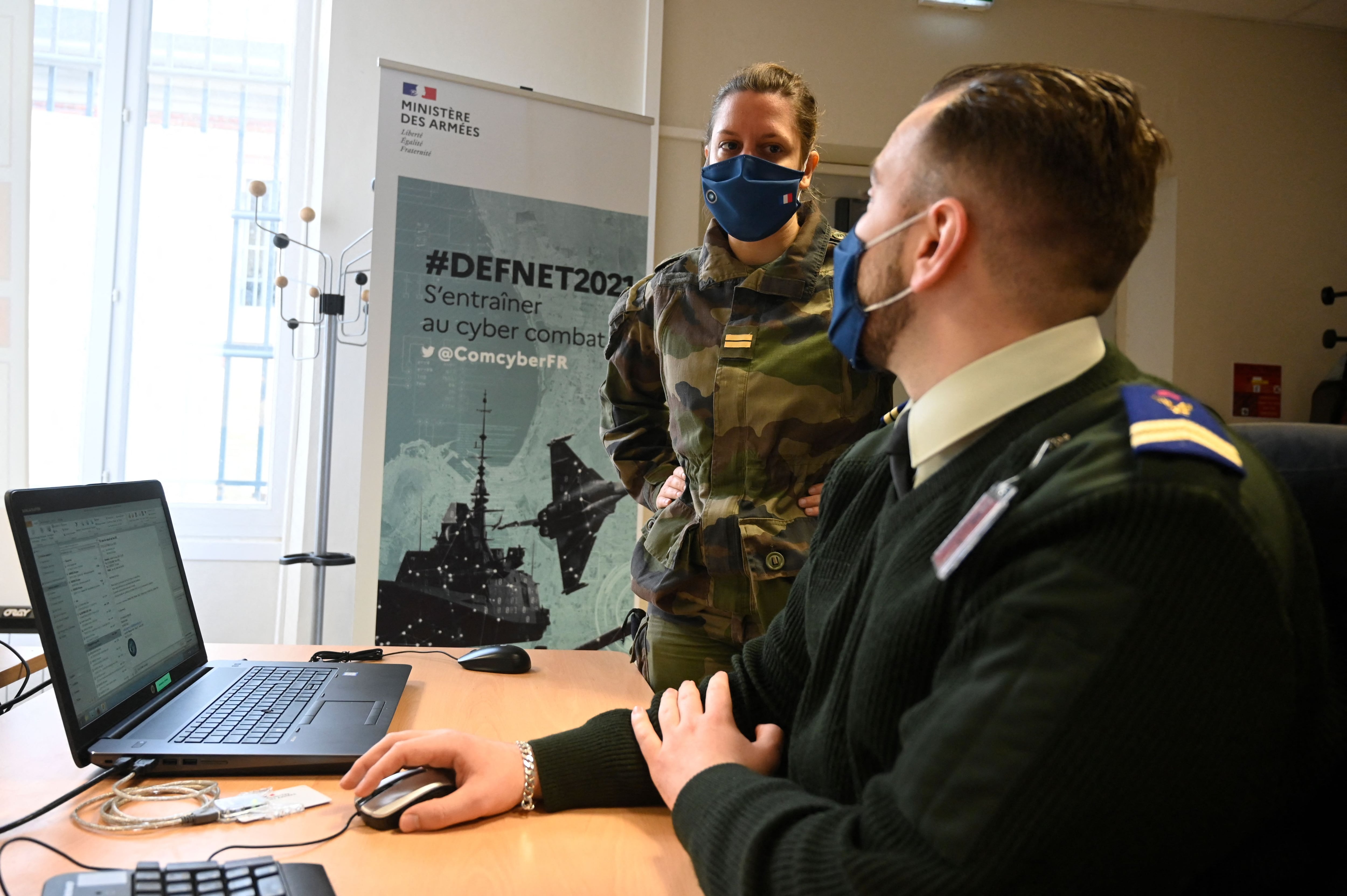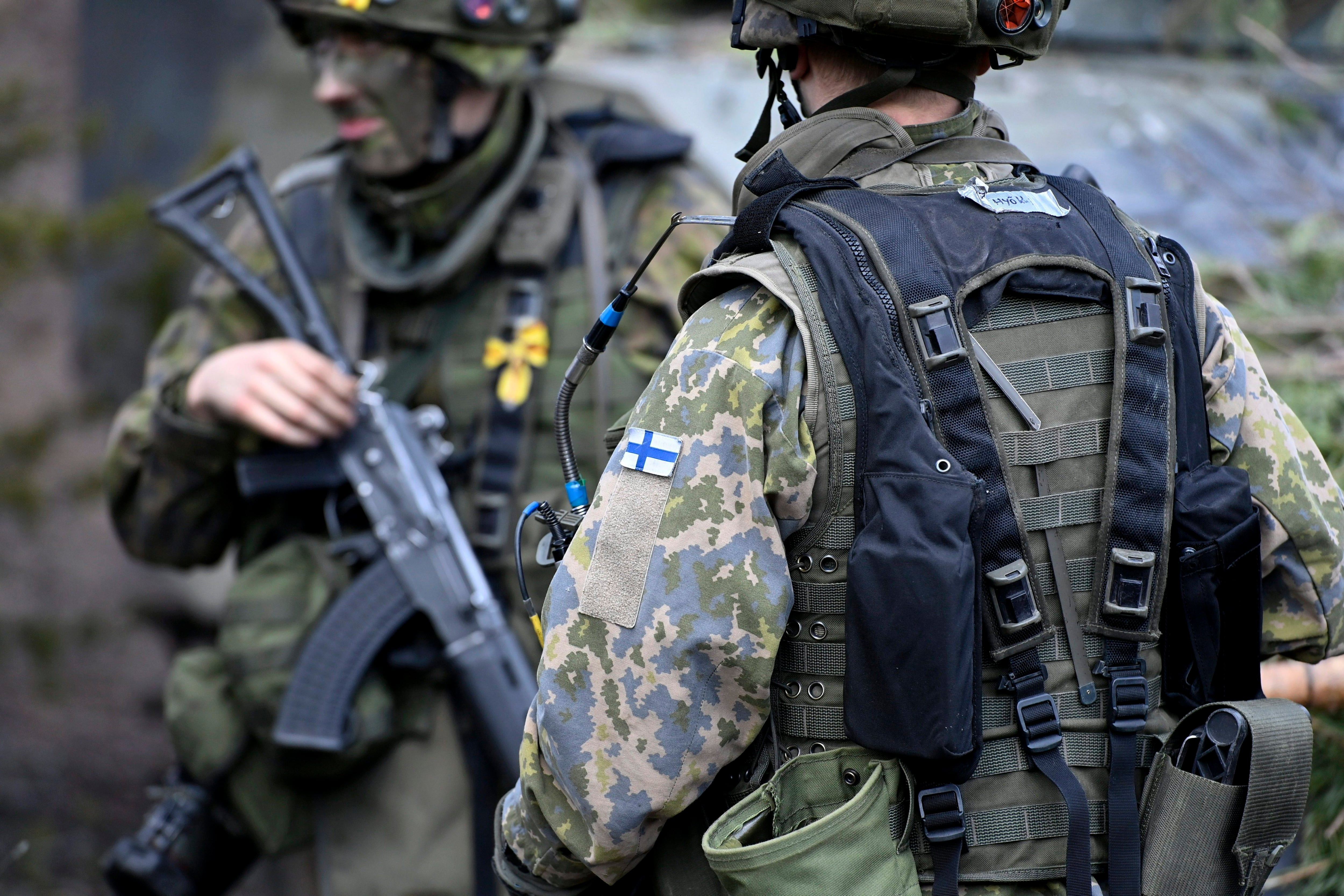STUTTGART, Germany — NATO is creating organizations within the alliance that can harness dual-use technologies in critical areas such as artificial intelligence, space, quantum computing and biotechnology for defense.
The alliance introduced two entities this year that are meant to support startups and academic institutions working on so-called emerging and disruptive technologies: the Defence Innovation Accelerator for the North Atlantic, or DIANA, with headquarters both on the European and North American continents; and the opt-in, venture capital-backed NATO Innovation Fund, or NIF.
Both are expected to launch next year, and NATO has already completed much of the “difficult work” in standing up the accelerator and the fund in anticipation of that milestone, according to David van Weel, NATO’s assistant secretary general for emerging security challenges, who spoke to Defense News in an exclusive interview.
Building the accelerator
DIANA will connect NATO to organizations working on emerging and disruptive technologies as well as the deep-tech field through so-called challenge programs, and via partnerships with more than 75 accelerators and test centers in member nations.
This year, NATO members agreed to the tech accelerator’s charter, an internal document and constitution of sorts that lays out the accelerator as a separate NATO entity and outlines its legal and financial framework.
A board of governors, including members of academia, the private sector and government, will oversee DIANA. The board met for the first time in October and approved a budget for 2023, van Weel said. He declined to provide a budget number, but did say he got “everything I wanted.”
Van Weel serves as DIANA’s interim managing director as NATO interviews candidates for a permanent leader, a process that could conclude by year’s end, he said.
The initial challenge programs, in which competitors will work to solve real-world problems such as operating in a GPS-denied environment, are expected to start around April. The goal is to run three programs per year, and member nations are identifying which technologies to feature, van Weel said.

DIANA will be what NATO calls a “joint-funded” entity, he added, meaning member nations have the flexibility to invest in the accelerator through their finance or innovation organizations, and not just through the ministries of foreign affairs or defense budgets.
The goal is to have the managing director, and DIANA itself, distanced from Brussels, he said. NATO previously announced it will have two headquarters: a European-centric location at Imperial College London, and a North American hub in Canada at a location yet to be determined.
Setting up the innovation fund
While all NATO countries are involved in DIANA, about three-quarters of its members were involved in developing the NATO Innovation Fund’s legal framework and agreed to provide initial funding, with the goal of investing €1 billion (U.S. $1.04 billion) into tech startups over the next 15 years.
NATO is now recruiting for an investment team and board of directors for the accelerator.
“We’re basically starting a company where the nations, as limited partners, exert their control over the general partner, which will do the actual day-to-day investments,” van Weel said.
Initial investments should begin in 2023, after an investment team is selected and final agreements are signed. The idea is for NIF to take a minority stake in companies and to coordinate other private capital that may, for now, be more hesitant to take risk on these early-stage or dual-use startups, van Weel explained.
For optimum success, NATO needs to bring in investors who have both defense and investment experience, rather than select a big-name firm that is more of a generalist, said Nicholas Nelson, a senior fellow with the Transatlantic Defense and Security program at the Center for European Policy Analysis.
“With regard to the dual-use and deep-tech industry, which is what DIANA and the NIF are supposed to be targeting, you need people who have experience, yes, on the investment front, but who also understand the national security environment and defense,” he told Defense News.
Twenty-two nations are involved in the innovation fund: Belgium; Bulgaria; the Czech Republic; Denmark; Estonia; Germany; Greece; Hungary; Iceland; Italy; Latvia; Lithuania; Luxembourg; the Netherlands; Norway; Poland; Portugal; Romania; Slovakia; Spain; Turkey; and the United Kingdom.
The United States, Canada and France are notable exceptions to that list, but are likely in a “wait-and-see” mode regarding the fund and want to ensure it won’t duplicate existing efforts within their own ecosystems, Nelson said.
While van Weel lauded the speed with which NATO has launched DIANA and the innovation fund in less than a year, he acknowledged work remains to set up practical elements, such as websites containing guidance for companies and investors interested in challenge programs.
As NATO races to stand up DIANA and NIF, their true value will only emerge once tangible capabilities are developed — otherwise they may end up as “just a bunch of PR wins,” Nelson said. The ultimate challenge for DIANA will be to focus on capabilities and tech areas that the entire alliance agrees upon, he noted, while NIF will, at least for now, require fewer member partners to come to agreement.
Nelson credited NATO for getting all its members to focus on the emerging and disruptive technology landscape. Trying to wrangle 30 allies — and likely two more soon — is no easy feat, “so it’s good that they got everybody on the same page,” he said.

Where do Sweden and Finland come in?
As of press time, two NATO members — Hungary and Turkey — have not formally agreed to Sweden’s and Finland’s accession to the alliance. The Nordic countries, already longtime allies and partners to NATO, are undergoing preparations for their membership in the meantime.
Van Weel said they’ve been “present at the [emerging and disruptive technologies] table as invitees” to ensure a seamless integration once the accession process is complete. As full NATO members, they will automatically be part of the DIANA ecosystem. But given NIF is an opt-in fund, “they will have to make up their mind whether or not they want to join as they become members,” he explained.
Innovative programs as well as emerging and disruptive technologies have long been part of both military and industrial capability development in Sweden, though the nation lacks a designated agency within the defense sector for this area, said Lars Elfvin, deputy director for acquisition, research and development at Sweden’s Defence Ministry.
“The increasingly important, or decisive, commitment from civil and dual-use technology development and actors in the development of military capability is of utmost importance, and in Sweden we naturally follow the work that takes place within the EU and NATO in the area of innovation,” he told Defense News in an email.
Stockholm is closely following multilateral efforts to bolster dual-use tech for defense, he added. “However, it should be emphasized that when and where Sweden decides to pursue technological breakthroughs, it can go in different directions depending on evaluation based on case-by-case considerations.”
Finland’s Defence Ministry did not respond to a request for comment on the nation’s potential role in NATO science and technology efforts.
DIANA and NIF would both benefit from Finland’s and Sweden’s inclusion in NATO, Nelson said. Both nations have strong startup ecosystems, as well as long-standing traditional industry and manufacturing players such as Sweden’s Saab and Finland’s Patria. Stockholm and Helsinki are active in the space and analytics domains, with the Swedish Space Corp. and Finnish microsatellite manufacturer ICEYE as notable players.
They will also bring in new testing opportunities, particularly in the High North, Nelson said. For example, NATO would have increased access to the Esrange Space Center, a rocket range and research center in northern Sweden operated by the Swedish Space Corp.
“You also are bringing in two highly educated populaces that have significant training and development around both military capabilities and tech sectors writ large, that will benefit both the innovation ecosystem, including DIANA, and potentially the innovation fund … if once they join, they choose to go down that road,” Nelson said.
Vivienne Machi is a reporter based in Stuttgart, Germany, contributing to Defense News' European coverage. She previously reported for National Defense Magazine, Defense Daily, Via Satellite, Foreign Policy and the Dayton Daily News. She was named the Defence Media Awards' best young defense journalist in 2020.








